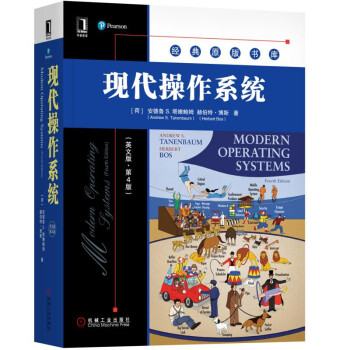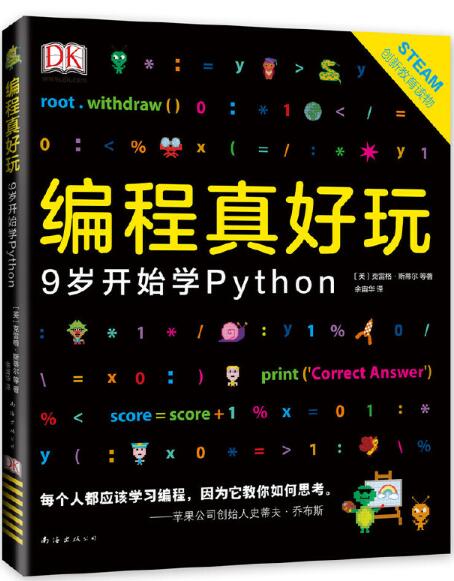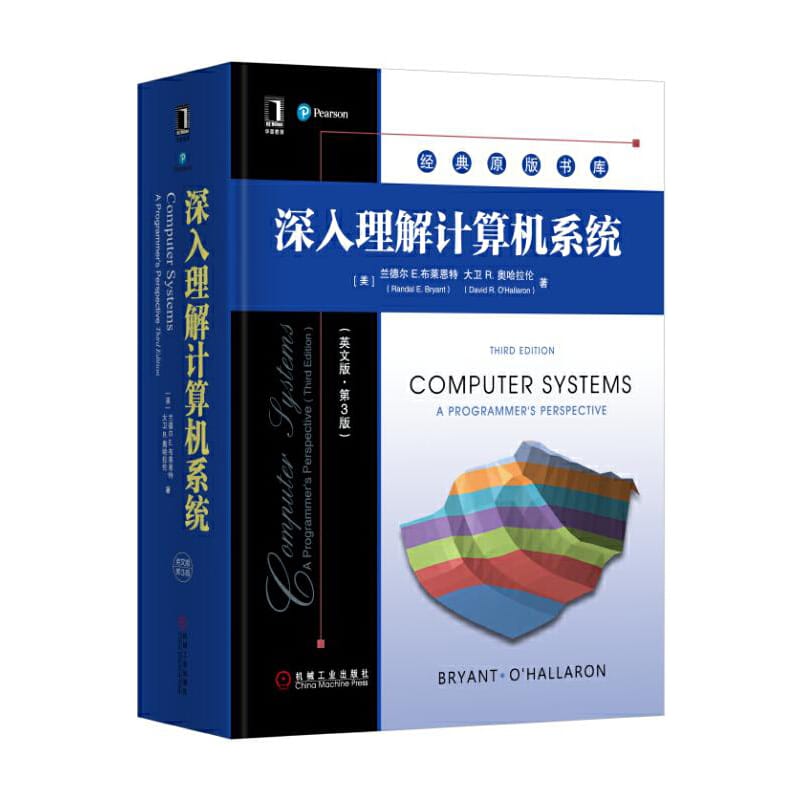现代操作系统(英文版·第4版) / 经典原版书库
定价:¥139.00
作者: [荷]安德鲁 S.塔嫩鲍姆,赫伯特·博斯
出版时间:2017-11
出版社:机械工业出版社
- 机械工业出版社
- 9787111581659
- 4版
- 283882
- 47229812-4
- 平装
- 16开
- 2017-11
- 1546
- 1104
- TP316
- 计算机通信类
- 本科
作者简介
内容简介
本书是操作系统领域的经典教材,主要内容包括进程与线程、内存管理、文件系统、输入/输出、死锁、虚拟化和云、多处理机系统、安全,以及关于UNIX、Linux、Android和Windows的实例研究等。第4版对知识点进行了全面更新,反映了当代操作系统的发展与动向。本书适合作为高等院校计算机专业的操作系统课程教材,也适合相关技术人员参考。
目录
ONTENTS
PREFACE xxiii
1 INTRODUCTION 1
1.1 WHAT IS AN OPERATING SYSTEM? 3
1.1.1 The Operating System as an Extended Machine 4
1.1.2 The Operating System as a Resource Manager 5
1.2 HISTORY OF OPERATING SYSTEMS 6
1.2.1 The First Generation (1945–55): Vacuum Tubes 7
1.2.2 The Second Generation (1955–65): Transistors and Batch Systems 8
1.2.3 The Third Generation (1965–1980): ICs and Multiprogramming 9
1.2.4 The Fourth Generation (1980–Present): Personal Computers 14
1.2.5 The Fifth Generation (1990–Present): Mobile Computers 19
1.3 COMPUTER HARDWARE REVIEW 20
1.3.1 Processors 21
1.3.2 Memory 24
1.3.3 Disks 27
1.3.4 I/O Devices 28
1.3.5 Buses 31
1.3.6 Booting the Computer 34
1.4 THE OPERATING SYSTEM ZOO 35
1.4.1 Mainframe Operating Systems 35
1.4.2 Server Operating Systems 35
1.4.3 Multiprocessor Operating Systems 36
1.4.4 Personal Computer Operating Systems 36
1.4.5 Handheld Computer Operating Systems 36
1.4.6 Embedded Operating Systems 36
1.4.7 Sensor-Node Operating Systems 37
1.4.8 Real-Time Operating Systems 37
1.4.9 Smart Card Operating Systems 38
1.5 OPERATING SYSTEM CONCEPTS 38
1.5.1 Processes 39
1.5.2 Address Spaces 41
1.5.3 Files 41
1.5.4 Input/Output 45
1.5.5 Protection 45
1.5.6 The Shell 45
1.5.7 Ontogeny Recapitulates Phylogeny 46
1.6 SYSTEM CALLS 50
1.6.1 System Calls for Process Management 53
1.6.2 System Calls for File Management 56
1.6.3 System Calls for Directory Management 57
1.6.4 Miscellaneous System Calls 59
1.6.5 The Windows Win32 API 60
1.7 OPERATING SYSTEM STRUCTURE 62
1.7.1 Monolithic Systems 62
1.7.2 Layered Systems 63
1.7.3 Microkernels 65
1.7.4 Client-Server Model 68
1.7.5 Virtual Machines 68
1.7.6 Exokernels 72
1.8 THE WORLD ACCORDING TO C 73
1.8.1 The C Language 73
1.8.2 Header Files 74
1.8.3 Large Programming Projects 75
1.8.4 The Model of Run Time 76
1.9 RESEARCH ON OPERATING SYSTEMS 77
1.10 OUTLINE OF THE REST OF THIS BOOK 78
1.11 METRIC UNITS 79
1.12 SUMMARY 80
2 PROCESSES AND THREADS 85
2.1 PROCESSES 85
2.1.1 The Process Model 86
2.1.2 Process Creation 88
2.1.3 Process Termination 90
2.1.4 Process Hierarchies 91
2.1.5 Process States 92
2.1.6 Implementation of Processes 94
2.1.7 Modeling Multiprogramming 95
2.2 THREADS 97
2.2.1 Thread Usage 97
2.2.2 The Classical Thread Model 102
2.2.3 POSIX Threads 106
2.2.4 Implementing Threads in User Space 108
2.2.5 Implementing Threads in the Kernel 111
2.2.6 Hybrid Implementations 112
2.2.7 Scheduler Activations 113
2.2.8 Pop-Up Threads 114
2.2.9 Making Single-Threaded Code Multithreaded 115
2.3 INTERPROCESS COMMUNICATION 119
2.3.1 Race Conditions 119
2.3.2 Critical Regions 121
2.3.3 Mutual Exclusion with Busy Waiting 121
2.3.4 Sleep and Wakeup 127
2.3.5 Semaphores 130
2.3.6 Mutexes 132
2.3.7 Monitors 137
2.3.8 Message Passing 144
2.3.9 Barriers 146
2.3.10 Avoiding Locks: Read-Copy-Update 148
2.4 SCHEDULING 148
2.4.1 Introduction to Scheduling 149
2.4.2 Scheduling in Batch Systems 156
2.4.3 Scheduling in Interactive Systems 158
2.4.4 Scheduling in Real-Time Systems 164
2.4.5 Policy Versus Mechanism 165
2.4.6 Thread Scheduling 165
2.5 CLASSICAL IPC PROBLEMS 167
2.5.1 The Dining Philosophers Problem 167
2.5.2 The Readers and Writers Problem 169
2.6 RESEARCH ON PROCESSES AND THREADS 172
2.7 SUMMARY 173
3 MEMORY MANAGEMENT 181
3.1 NO MEMORY ABSTRACTION 182
3.2 A MEMORY ABSTRACTION: ADDRESS SPACES 185
3.2.1 The Notion of an Address Space 185
3.2.2 Swapping 187
3.2.3 Managing Free Memory 190
3.3 VIRTUAL MEMORY 194
3.3.1 Paging 195
3.3.2 Page Tables 198
3.3.3 Speeding Up Paging 201
3.3.4 Page Tables for Large Memories 205
3.4 PAGE REPLACEMENT ALGORITHMS 209
3.4.1 The Optimal Page Replacement Algorithm 209
3.4.2 The Not Recently Used Page Replacement Algorithm 210
3.4.3 The First-In, First-Out (FIFO) Page Replacement Algorithm 211
3.4.4 The Second-Chance Page Replacement Algorithm 211
3.4.5 The Clock Page Replacement Algor
PREFACE xxiii
1 INTRODUCTION 1
1.1 WHAT IS AN OPERATING SYSTEM? 3
1.1.1 The Operating System as an Extended Machine 4
1.1.2 The Operating System as a Resource Manager 5
1.2 HISTORY OF OPERATING SYSTEMS 6
1.2.1 The First Generation (1945–55): Vacuum Tubes 7
1.2.2 The Second Generation (1955–65): Transistors and Batch Systems 8
1.2.3 The Third Generation (1965–1980): ICs and Multiprogramming 9
1.2.4 The Fourth Generation (1980–Present): Personal Computers 14
1.2.5 The Fifth Generation (1990–Present): Mobile Computers 19
1.3 COMPUTER HARDWARE REVIEW 20
1.3.1 Processors 21
1.3.2 Memory 24
1.3.3 Disks 27
1.3.4 I/O Devices 28
1.3.5 Buses 31
1.3.6 Booting the Computer 34
1.4 THE OPERATING SYSTEM ZOO 35
1.4.1 Mainframe Operating Systems 35
1.4.2 Server Operating Systems 35
1.4.3 Multiprocessor Operating Systems 36
1.4.4 Personal Computer Operating Systems 36
1.4.5 Handheld Computer Operating Systems 36
1.4.6 Embedded Operating Systems 36
1.4.7 Sensor-Node Operating Systems 37
1.4.8 Real-Time Operating Systems 37
1.4.9 Smart Card Operating Systems 38
1.5 OPERATING SYSTEM CONCEPTS 38
1.5.1 Processes 39
1.5.2 Address Spaces 41
1.5.3 Files 41
1.5.4 Input/Output 45
1.5.5 Protection 45
1.5.6 The Shell 45
1.5.7 Ontogeny Recapitulates Phylogeny 46
1.6 SYSTEM CALLS 50
1.6.1 System Calls for Process Management 53
1.6.2 System Calls for File Management 56
1.6.3 System Calls for Directory Management 57
1.6.4 Miscellaneous System Calls 59
1.6.5 The Windows Win32 API 60
1.7 OPERATING SYSTEM STRUCTURE 62
1.7.1 Monolithic Systems 62
1.7.2 Layered Systems 63
1.7.3 Microkernels 65
1.7.4 Client-Server Model 68
1.7.5 Virtual Machines 68
1.7.6 Exokernels 72
1.8 THE WORLD ACCORDING TO C 73
1.8.1 The C Language 73
1.8.2 Header Files 74
1.8.3 Large Programming Projects 75
1.8.4 The Model of Run Time 76
1.9 RESEARCH ON OPERATING SYSTEMS 77
1.10 OUTLINE OF THE REST OF THIS BOOK 78
1.11 METRIC UNITS 79
1.12 SUMMARY 80
2 PROCESSES AND THREADS 85
2.1 PROCESSES 85
2.1.1 The Process Model 86
2.1.2 Process Creation 88
2.1.3 Process Termination 90
2.1.4 Process Hierarchies 91
2.1.5 Process States 92
2.1.6 Implementation of Processes 94
2.1.7 Modeling Multiprogramming 95
2.2 THREADS 97
2.2.1 Thread Usage 97
2.2.2 The Classical Thread Model 102
2.2.3 POSIX Threads 106
2.2.4 Implementing Threads in User Space 108
2.2.5 Implementing Threads in the Kernel 111
2.2.6 Hybrid Implementations 112
2.2.7 Scheduler Activations 113
2.2.8 Pop-Up Threads 114
2.2.9 Making Single-Threaded Code Multithreaded 115
2.3 INTERPROCESS COMMUNICATION 119
2.3.1 Race Conditions 119
2.3.2 Critical Regions 121
2.3.3 Mutual Exclusion with Busy Waiting 121
2.3.4 Sleep and Wakeup 127
2.3.5 Semaphores 130
2.3.6 Mutexes 132
2.3.7 Monitors 137
2.3.8 Message Passing 144
2.3.9 Barriers 146
2.3.10 Avoiding Locks: Read-Copy-Update 148
2.4 SCHEDULING 148
2.4.1 Introduction to Scheduling 149
2.4.2 Scheduling in Batch Systems 156
2.4.3 Scheduling in Interactive Systems 158
2.4.4 Scheduling in Real-Time Systems 164
2.4.5 Policy Versus Mechanism 165
2.4.6 Thread Scheduling 165
2.5 CLASSICAL IPC PROBLEMS 167
2.5.1 The Dining Philosophers Problem 167
2.5.2 The Readers and Writers Problem 169
2.6 RESEARCH ON PROCESSES AND THREADS 172
2.7 SUMMARY 173
3 MEMORY MANAGEMENT 181
3.1 NO MEMORY ABSTRACTION 182
3.2 A MEMORY ABSTRACTION: ADDRESS SPACES 185
3.2.1 The Notion of an Address Space 185
3.2.2 Swapping 187
3.2.3 Managing Free Memory 190
3.3 VIRTUAL MEMORY 194
3.3.1 Paging 195
3.3.2 Page Tables 198
3.3.3 Speeding Up Paging 201
3.3.4 Page Tables for Large Memories 205
3.4 PAGE REPLACEMENT ALGORITHMS 209
3.4.1 The Optimal Page Replacement Algorithm 209
3.4.2 The Not Recently Used Page Replacement Algorithm 210
3.4.3 The First-In, First-Out (FIFO) Page Replacement Algorithm 211
3.4.4 The Second-Chance Page Replacement Algorithm 211
3.4.5 The Clock Page Replacement Algor

















